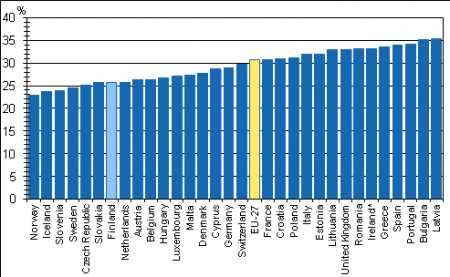Thu, 23 May, 2013 01:59:49 AM FTimes Report, May 23
 Source - Statistics Finland Income differentials in Finland are still lower than the European average, even though the earning gap grew rapidly in the late 1990s, according to a Statistics Finland report.
The Statistics Finland released the report on Wednesday as per the EU Statistics on Income and Living Conditions (EU-SILC).
The report said the smallest relative income differentials in Europe were found in Norway and Iceland and the largest in Latvia and Bulgaria in 2010.

Photo - Lehtikuva In Finland, it said, the average income of the highest-income decile was 5.3-fold that of the lowest-income decile in 2010, while in the countries with the highest income differentials it was more than 10 folds.
The most common income inequality indicator, the Gini index, was 25.8 in Finland in 2010, when the average for European countries was 30.7.
The Gini coefficient gets the value 0, if everyone receives the same amount of income, and 100, if one income earner receives all the income.
Income differentials are usually larger in eastern and southern European countries where the income level is also lower.
Measured both by purchasing power adjusted income level and income differentials, Finland belongs to the group that contains mainly central and northern European countries.

Source - Statistics Finland Income refers to the monetary income after taxes and consists of earned income, property income, and transfers.
The income differentials narrowed down in Finland from the mid-1960s to the 1980s.
After this, the changes were small until the income differentials grew over a few years in the late 1990s close to their current levels.
The Gini coefficient for disposable monetary income grew by 4.1 percentage points from 1990 to 2000 and by approximately one percentage point from 2000 to 2011.
More News
|
|
Finland Times
| Thursday, 18 September, 2025 |

